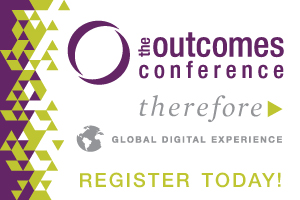
How To Lead So People’s Brains Can Function By Dr. Henry Cloud
My client, CEO of a 20 billion dollar company, looked at me with one of those expressions that smart people sometimes get when something extra bright goes off in their heads, one of those thoughts that captures even their attention. He looked at me, squinted, and said something like this.
“You know what is weird?”
“What?” I asked.
“Everyone out there is always trying to figure out the right plan. They worry and obsess about finding the exact right plan. That is where all of their focus and energy goes. But, the truth is that there are five right plans. There are a lot of ways to get there. The real problem is getting the people to do what it takes to make the plan work. That is where you win or lose. It’s always about the people.”
He was right. Leadership is always about turning a vision into reality and getting accurate results in the real world. It ultimately comes down to a leader’s ability to lead people into creating that new reality, i.e., making the plan results. So, why do some leaders get results and others don’t, even when they have good plans?
Well, a lot of it comes down to brains. Not how brilliant the leader is, but whether or not they are leading in a way that people’s brains can follow. Said another way, people’s brains function best and do well under certain conditions. Leaders who lead in a way that creates those conditions get good results from their people. The good plans work. But, the reverse is also true: leaders who create dire conditions for the brain can get poor results, even with a good plan.
Both neuroscience and experience have shown us that leadership style matters. It can get people focused or confused. They are motivated or demoralized. Optimistic or negative. Energetic or listless. Together or fragmented. And on and on. All the feelings are factors that determine whether or not results happen. Much of this concerns the match between a leader’s behavior and how people’s brains are constructed. I talk about this in-depth in my new book Boundaries for Leaders: Results, Relationships and Being Ridiculously in Charge (April 2013, HarperCollins), but let’s take a look at some of the critical leadership style dimensions that affect the brain’s ability to perform:
Great leaders create “executable attention.”
For the brain to accomplish any goal, it must do three things.
- It must attend to the relevant data… and information related to the goal. For example, if you want to drive your car from your house to 7-Eleven, your brain has to be able to attend to a particular set of data: your speed, which lane you are in, oncoming traffic, upcoming turns, etc. To get there, it must be attending to what matters.
- It must inhibit everything that is not relevant and not let it get you distracted. It can’t text or watch a video while you are driving. It can’t be gazing for long, counting cows in the pasture. It has to shut all of that out.
- It needs a working memory. In other words, it can’t just be dropped out of a time machine halfway to 7-Eleven and know what to do next. It must also understand what it did before to learn what to do now. What was the last turn you made? Did you just hit the accelerator or the brake? It must be current in a flow of activity and know what just happened.
These three functions are called the “executive functions” of the brain. In a child, when they are not working well, Attention Deficit Disorder (ADD) develops. But businesses can also have added if the leaders are perpetually confusing their people, lobbing new objectives over the fence while the focus is elsewhere. Attention breaks down, focus gets scattered, and distractions interfere.
Leaders often fail to keep their people attending to what the focus is supposed to be. Or they do not own their teams or organizations in a current flow, taking what they did last and creating forward movement. Too often, significant breakthroughs happen in planning, only to not be looked at again for six months. Good leaders keep it alive, even in front of people, to form good working memory. Progress and incremental steps are visible and understood, fitting into a cohesive whole.
Remember, to get the best performance out of people, keep them attending to what is critical, inhibiting all the distractions from interfering, and holding it alive in front of them in a flow.
Great leaders create good brain chemistry.
The truth is that people’s brains run on chemicals: neurotransmitters, hormones, and the like. And what chemicals a leader produces in their people’s brains matters. A few factors drastically influence the chemical cocktail that affects people’s performance.
- There has to be a positive emotional climate. When people feel under damaging threat or toxic fear, the kind that comes from leaders who rule with harshness, anger, or negative tones, their higher brain functions get inhibited, and they go into “fight or flight” mode. Stress hormones interfere with creativity, problem-solving, and other higher-order activities. The brain tells someone to either push back or move away, i.e., “fight or flight.” That is the opposite of working the “plan.” Leaders get less of what they desire when using negative motivation to motivate people to perform. So, watch the tone and create a positive atmosphere.
- Good brain chemistry is created from relational connections. When people feel connected to each other and supportive of each other, the brain is happiest and the highest functioning. Stress hormones are reduced, and better thinking occurs. On the other hand, if they feel alone or isolated in the stress, fragmented and not a part of things, the brain can begin to produce not-so-positive chemicals that interfere with getting things done, creative problem solving, and the like. Happy brains are connected brains.
So, create practices that get people connected to others, feeling a sense of unity. When they think that, they will be lifted to greater heights of performance.
Great leaders are the gatekeepers of thinking software, leading to control.
Thinking patterns take root in organizations and teams. When these ways of thinking occur, they affect how people’s brains function. The chemistry changes, becoming helpless, passive, and inactive. And the most destructive thinking patterns fall into two categories: negative and powerlessness. When individuals or groups begin to think in these ways and are allowed to institutionalize, they become part of the DNA and drastically affect results.
Negative thinking falls into three interpretations of reality, as researchers such as Martin Seligman have noted: personal, pervasive, and permanent. These categories involve how people explain events, such as a bad quarter of sales or not closing a deal. “We didn’t get the deal because we are not as big as the competition” (or don’t have the sales force they do or a thousand other excuses). The result is interpreted personally about the company or the individuals, meaning “bad” in some way. “And it is not only our size, but we are behind them in every area. And the whole market is bad as well.” Here, the result is interpreted as “pervasively” seeing things in a “totally” bad light. Lastly, the time dimension is added, and it is “permanent:” “And it is not going to be any different in the future, either.”
When a leader begins to hear these three elements taking root in individuals, teams, and meetings, he must set a boundary on that negative thinking. The leader is the steward of the thinking and must not allow this to take root. A hostile organization is a non-achieving organization. Instead, negative realities, such as size or market conditions, should be seen as issues or problems to be solved or transformed into opportunities, not proof that we are not “good enough.”
Likewise, powerless thinking is when people see themselves as unable to do anything since internal or external conditions are as they are. “The home office won’t do what we need” becomes a reason for non-performance. The competition’s size or the market leads to victim thinking, and proactive, aggressive responses are diminished. Great leaders do not allow these to take root and do everything to foster a proactive “there is a way to win” culture.
Remember to do two things:
- Set boundaries on negative, powerless thinking and transform it into positive, proactive thinking.
- Make it overt, get people to see what they are doing, and talk about different ways to think and respond. In my experience, significant breakthroughs can happen when these patterns are exposed and discussed in teams.
What happens next is that leaders can help people take ownership and control of the behaviors and activities that they can control and which drive results. When negative and powerless thinking is rampant, people lose control of the specific activities that they can do, which affects outcomes. Instead, they focus on the negative “realities” they cannot control, such as the competition’s size or the market conditions. The brain loves control.
Leaders get people to take control of what they can control that affects results, empowering them and holding them accountable. When that occurs, instead of focusing on things they cannot control, results change.
Boundaries For Leaders
Leaders are in charge of the “boundaries” in these areas. A boundary is a line that defines what will be and what will not, what will exist and what will not. A leader gets what they either “creates” or “allows.” Where they draw the line, the boundaries determine everything.
So, as a leader, draw a line, a boundary, around what needs attending, the emotional climate created, and the thinking patterns that exist. When you do that, you will see very different results.
##
Dr. Henry Cloud is a leadership and organizational coach and consultant and is the author of “Boundaries For Leaders: Results, Relationships and Being Ridiculously In Charge.” (HarperCollins, April 2013) F

What is Christian Leadership Alliance?
Christian Leadership Alliance equips and unites leaders to transform the world for Christ. We are the leaders of Christ-centered organizations who are dedicated to faithful stewardship for greater kingdom impact.
Sign up for FREE blog updates.
Upcoming Events
Check back later!


